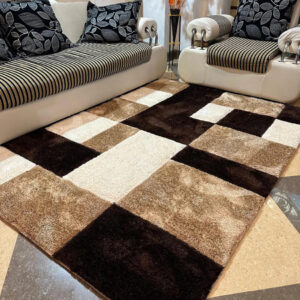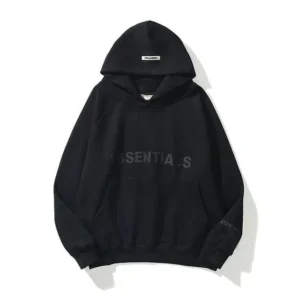Carbon steel plate is the backbone material for countless industries—from construction and shipbuilding to petrochemicals and energy. When manufactured using cold rolling and supplied factory direct, it offers exceptional dimensional accuracy, smooth surface finish, and predictable mechanical properties, making it a preferred choice for precision applications.
For projects that operate under extreme environmental conditions—ranging from cryogenic service at -50 °C to high-heat service at 600 °C—special temperature-resistant grades ensure structural integrity, safety, and longevity. Whether for LNG tanks in polar climates or boilers in thermal power plants, cold rolled carbon steel plates meet diverse engineering challenges with reliability.
2. What Is Cold Rolled Carbon Steel Plate?
Cold-rolled carbon steel plate is produced by taking hot-rolled steel and passing it through rollers at room temperature. This secondary processing refines the surface, increases hardness, and allows for tighter dimensional tolerances.
Key attributes include:
-
Smooth Surface Finish – Ideal for painting, powder coating, galvanizing, or other surface treatments.
-
Tighter Thickness Tolerances – Ensures dimensional consistency in precision-engineered components.
-
Increased Hardness – Work hardening during cold rolling boosts mechanical strength.
-
Improved Straightness – Reduces warping, camber, or twist compared to hot rolled plate.
Common grades: SPCC, DC01, ASTM 1018, and EN 10025-2 equivalents in mild carbon steels.
3. Benefits of Factory Direct Sales
Purchasing directly from mills or authorized fabrication plants offers significant advantages:
-
Cost Savings – Eliminates distributor markups, allowing more competitive per-ton pricing.
-
Consistent Quality – Quality checks are performed right at the production source.
-
Customization – Direct orders can be tailored for grade, thickness, width, and surface finish.
-
Faster Lead Times – Reduces procurement delays, crucial for time-sensitive projects.
-
Traceability – Mill Test Certificates (MTCs) and heat numbers ensure full product history.
4. Temperature-Resistant Carbon Steel Plate Grades
Performance in extreme temperatures is largely determined by chemical composition and heat treatment.
Low-Temperature Service (-50 °C to -20 °C)
-
Steels are often normalized or quenched-and-tempered carbon-manganese grades.
-
Examples: ASTM A516 Grade 70 (normalized), EN P355NL2.
-
Applications: LNG storage tanks, pressure vessels, cryogenic piping.
Room Temperature to Elevated (Up to 400 °C)
-
Structural and boiler-quality steels.
-
Examples: ASTM A36, S235JR, IS 2062 E250.
-
Applications: Construction beams, bridges, and machinery frames.
High-Temperature Service (400 °C to 600 °C)
-
Heat-resistant carbon-molybdenum steels with microstructural stability.
-
Examples: ASTM A387 Grade 11/22, heat-treated carbon steels.
-
Applications: Power plant boilers, industrial furnaces, heat exchangers, petrochemical reactors.
5. Fabrication Capabilities
Specialized factories serving temperature-specific applications offer:
-
Precision Cutting: Plasma, laser, waterjet, or oxy-fuel flame cutting.
-
Bending & Rolling: Cylindrical, conical, or complex profile forming.
-
Certified Welding: For ASME or EN pressure vessel and structural standards.
-
Heat Treatment: Normalizing, quenching, tempering, stress relieving.
-
Surface Treatment: Shot blasting, priming, pickling, oiling for corrosion protection.
6. Quality Control for Temperature-Specific Steel
Maintaining performance at extreme temperatures requires rigorous testing:
-
Impact Testing: Charpy V-Notch to assess toughness at low temperatures.
-
Tensile & Yield Tests: Confirm strength at service conditions.
-
Ultrasonic Testing (UT): Detects internal flaws.
-
Dimensional Verification: Ensures compliance with specified tolerances.
-
Chemical Analysis: Confirms alloying element content.
Relevant standards include ASTM A516 / A537, EN 10028, and ASME SA387.
7. Applications Across Industries
Low-Temperature (-50 °C to -20 °C)
-
LNG terminals and tanks
-
Arctic oil and gas infrastructure
-
Cryogenic plant vessels
General Applications (Room Temperature)
-
Construction frameworks
-
Heavy machinery chassis
-
Shipbuilding
High-Temperature (Up to 600 °C)
-
Steam generation boilers
-
Petrochemical plant reactors
-
Heat exchangers
-
Industrial ovens and furnaces
8. Cold Rolled vs Hot Rolled for Extreme Temperatures
| Feature | Cold Rolled Plate | Hot Rolled Plate |
|---|---|---|
| Tolerances | Tight, precise | Moderate |
| Surface Finish | Smooth, coating-ready | Rough, may need machining |
| Strength | Higher from work hardening | Lower unless heat treated |
| Temperature Range | Suitable with correct grade | Suitable with correct grade |
| Cost | Slightly higher | More economical for large sizes |
While hot rolled plate is common for heavy-section, high-heat applications, cold-rolled plate is unmatched in precision and surface finish, making it ideal for exacting manufacturing and coating processes.
9. Procurement Checklist for Buyers
To ensure the best results:
-
Define Temperature Requirements – Clarify operational range (-50 °C, 600 °C, or both).
-
Select the Right Grade – Match ASTM/EN/JIS codes to the intended application.
-
Specify Dimensions – Include exact tolerances for thickness, width, length.
-
Request MTCs – Essential for compliance and traceability.
-
Check Fabrication Options – Cutting, bending, welding capabilities.
-
Confirm Delivery Timelines – Especially critical for large-scale projects.
-
Verify Standards Compliance – Particularly for pressure vessel or load-bearing applications.
10. Future Outlook
-
Energy Expansion: LNG, wind, and solar projects will push demand for temperature-specific steels.
-
Efficiency Upgrades: High-efficiency thermal power plants will require high-temperature plates.
-
Automation in Fabrication: Digital cutting and bending will reduce waste and improve accuracy.
-
Sustainability Trends: Green steelmaking will influence production methods and pricing.
Conclusion
Cold rolled carbon steel plate in cheap rate—especially when sourced factory-direct—offers a unique balance of precision, strength, and adaptability. With specialized grades, it can reliably serve applications from freezing -50 °C LNG environments to heat-intensive 600 °C industrial plants.
Choosing the right grade, working with a capable fabricator, and ensuring strict quality controls are key to long-term performance. From structural frameworks to pressure vessels, factory-direct cold-rolled carbon steel plates remain an indispensable material for industries that demand both accuracy and durability.


